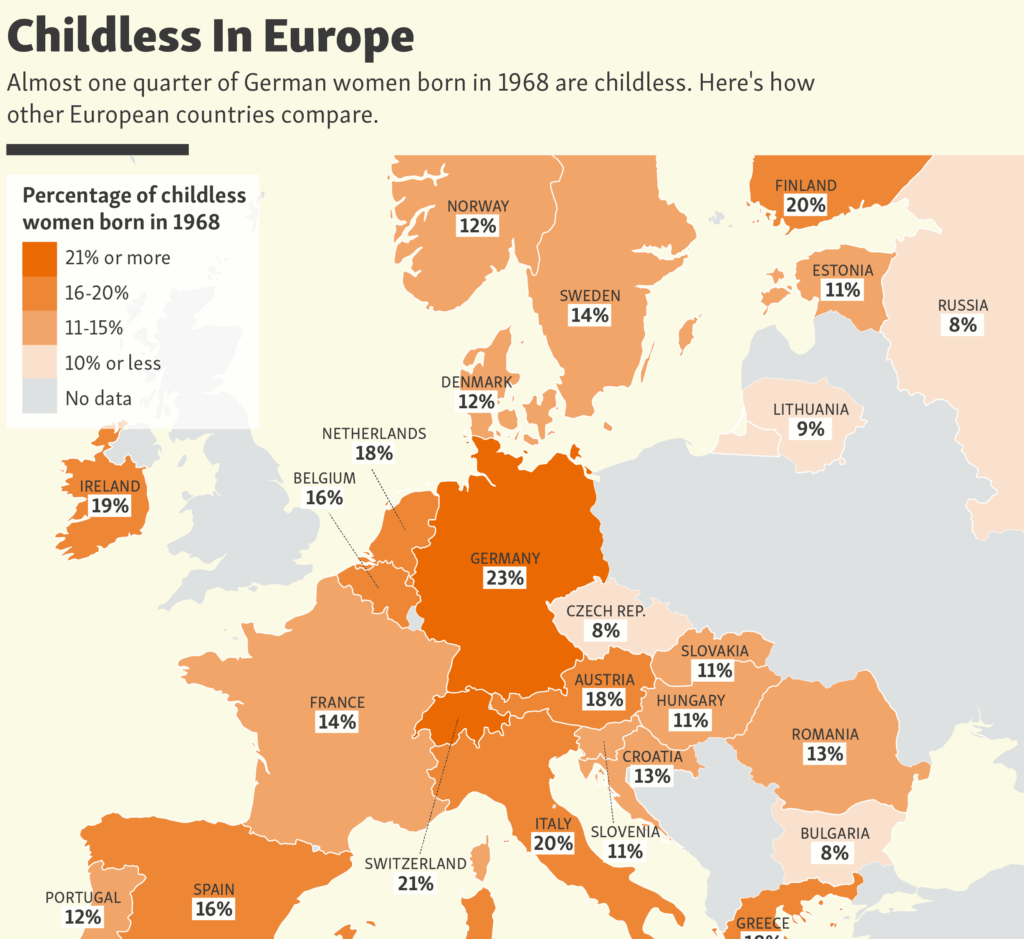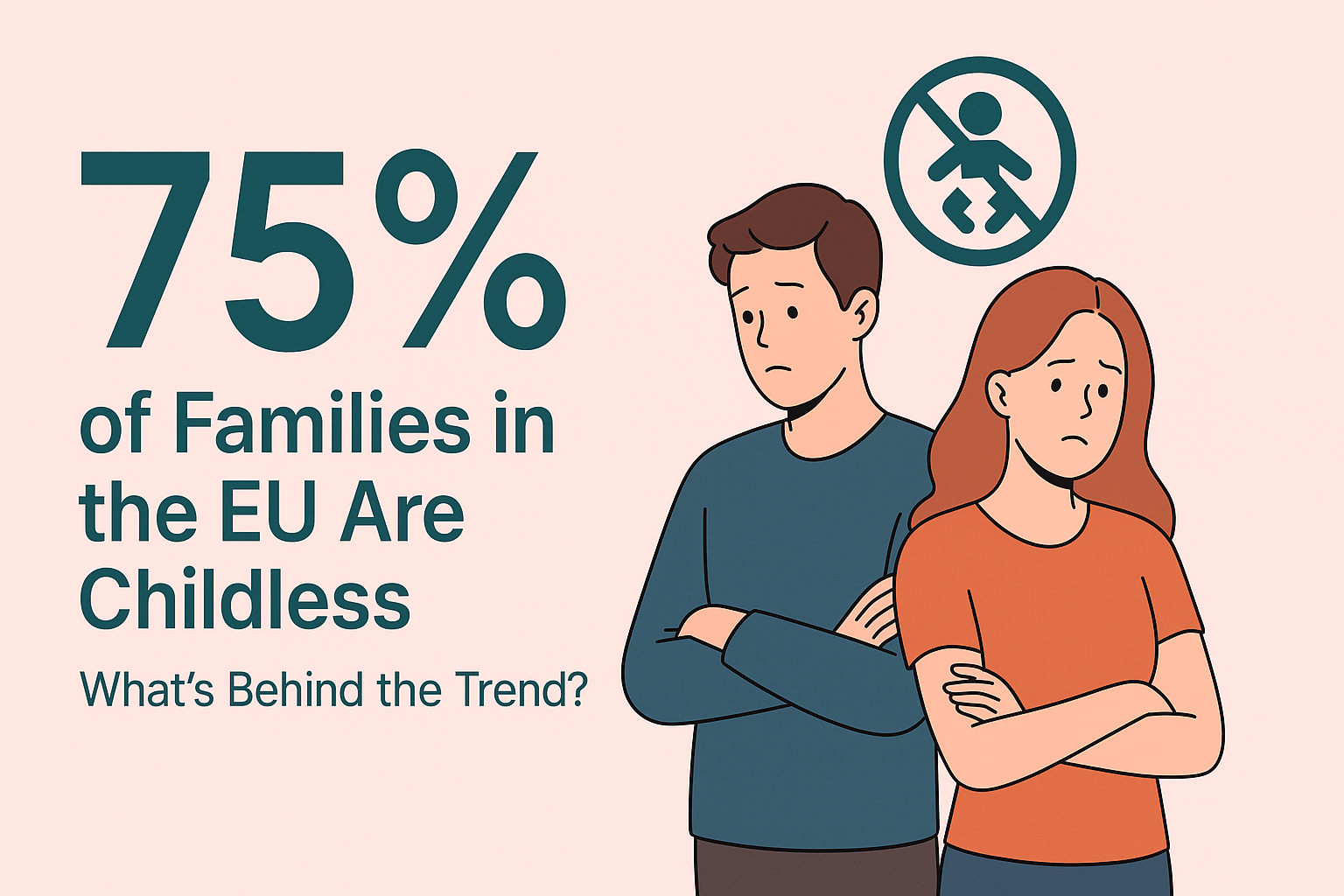The European Union is facing a startling demographic shift. According to recent data from Eurostat, 75% of families in the EU do not have children. This figure, reported in 2024, has sparked discussions about the future of family structures, societal priorities, and economic implications across the continent. This article, prepared by journalists at TheMors, dives into the reasons behind this trend, its consequences, and what it means for the future of Europe. We aim to provide a clear, fact-based analysis to help you understand this complex issue.
- Understanding the Data: A Closer Look at Childless Families
- Why Are So Many Families Childless?
- Economic Challenges and Housing Issues
- Changing Social Norms and Priorities
- Policy Gaps and Lack of Support
- The Impact of Childlessness on Society
- Economic Implications
- Social and Cultural Shifts
- Policy Responses and Future Outlook
- What Does This Mean for the Future?
- Can the Trend Be Reversed?
- The Bigger Picture: A Global Perspective
- Conclusion: A Call to Action
Understanding the Data: A Closer Look at Childless Families
In 2024, Eurostat revealed that only 23.6% of the nearly 202 million households in the EU have children. This means that three out of every four families are childless, a figure that includes both couples without children and single-person households. The data paints a picture of a rapidly changing society, where traditional family models are becoming less common.
This trend isn’t uniform across Europe. Countries like Sweden and Germany report higher rates of childless households, often exceeding 80%, while nations like Poland and Ireland show slightly lower rates, though still significant. The reasons vary, but economic pressures, shifting cultural values, and personal choices all play a role.

Why Are So Many Families Childless?
Several factors contribute to the high percentage of childless families in the EU. Let’s break them down.
Economic Challenges and Housing Issues
Raising children is expensive. From childcare costs to education and housing, the financial burden of parenthood is a major deterrent for many young Europeans. In urban areas, where housing prices have skyrocketed, young couples often struggle to afford homes large enough for a family. For example, in cities like Berlin or Amsterdam, renting a two-bedroom apartment can consume over half of an average couple’s income.
Ludmila Cherenko, an expert from the Institute of Demography and Social Studies, notes that young people often delay starting families due to financial instability. “When young people live with their parents because they can’t afford separate housing, it delays family planning,” she explains. This is particularly true in southern and eastern European countries, where multigenerational households are common due to economic necessity.
Changing Social Norms and Priorities
Cultural attitudes toward family have shifted dramatically. Many young adults prioritize career development, travel, or personal growth over starting a family. The rise of the “child-free” movement, where individuals consciously choose not to have children, is gaining traction. Surveys from the Levada Center indicate that over 40% of young Europeans support the idea of living without children to focus on personal goals.
This shift is partly driven by greater gender equality. Women, in particular, are pursuing higher education and professional careers at unprecedented rates. In the EU, women now outnumber men in tertiary education, with 46% of women aged 25–34 holding a degree compared to 39% of men. This focus on career often delays or eliminates plans for motherhood.
Policy Gaps and Lack of Support
While some EU countries offer generous parental leave and childcare subsidies, others lag behind. For instance, Scandinavian countries like Denmark provide extensive support for families, including affordable daycare and flexible work policies. In contrast, countries like Italy and Greece struggle with limited childcare options and outdated family policies, making it harder for parents to balance work and family life.
Zinaida Dragunkina, a Russian official quoted in Rossiyskaya Gazeta, highlighted the need for better support systems like affordable childcare and trained nannies. Similar challenges exist in parts of the EU, where the lack of accessible childcare discourages young couples from having children.
The Impact of Childlessness on Society
The high rate of childless families has far-reaching consequences for Europe’s economy, social systems, and cultural landscape. Here’s how.
Economic Implications
A declining birth rate directly affects the labor force and pension systems. With fewer children being born, the EU faces an aging population, which strains pension funds and healthcare systems. By 2050, the EU projects that the old-age dependency ratio—the number of people over 65 compared to the working-age population—will rise to 49%. This means nearly one retiree for every two workers, a sharp increase from today’s ratio.
Businesses are also feeling the pinch. A shrinking workforce reduces productivity and innovation, while consumer markets contract as fewer young people enter the economy. Industries like education and childcare are already seeing reduced demand in some regions.
Social and Cultural Shifts
The rise in childless households is reshaping social norms. Single-person households now account for a significant portion of the EU’s population, particularly in urban areas. In Sweden, for example, over 50% of households consist of one person. This trend reflects a growing emphasis on individualism, where personal freedom and flexibility take precedence over traditional family roles.
However, this shift can also lead to social Jonaszkiewicz, a social worker, points out that the lack of strong family support systems contributes to feelings of isolation among young adults. “When people feel disconnected from community or family, they’re less likely to see parenthood as a priority,” she says. This sense of isolation is compounded by the increasing number of young adults living with their parents due to economic constraints, as noted in a 2018 NV report.
Policy Responses and Future Outlook
EU governments are aware of the demographic crisis and are implementing measures to address it. Some countries have introduced incentives like tax breaks for families, extended parental leave, and subsidized childcare. However, these policies often fall short in addressing the root causes, such as housing affordability and job insecurity.
For example, France has seen some success with its family-friendly policies, including generous maternity leave and universal childcare access. Yet, even in France, the fertility rate remains below the replacement level of 2.1 children per woman, hovering around 1.8. This suggests that policy alone may not be enough to reverse the trend.
What Does This Mean for the Future?
The high rate of childless families raises questions about the sustainability of Europe’s social and economic systems. Without a significant increase in birth rates or immigration, the EU could face labor shortages, declining economic growth, and strained public services. Some experts argue that embracing immigration could offset these challenges, as newcomers often have higher birth rates and can bolster the workforce. However, immigration policies remain a contentious issue in many EU countries.
On a cultural level, the shift away from traditional family structures challenges long-held assumptions about what constitutes a family. As the definition of family evolves to include diverse arrangements—like same-sex partnerships or chosen families—society must adapt to support these new dynamics. The EU’s directives on family reunification, for instance, now recognize a broader range of family members, including partners and extended relatives, reflecting this changing reality.
Can the Trend Be Reversed?
Encouraging higher birth rates requires addressing both economic and cultural barriers. Affordable housing, better work-life balance, and accessible childcare are critical steps. Additionally, public campaigns to promote the value of parenthood could shift perceptions, especially among younger generations who prioritize personal fulfillment.
Some countries are experimenting with innovative solutions. Hungary, for example, offers lifetime tax exemptions for mothers with four or more children, though the long-term impact of such policies remains unclear. Meanwhile, grassroots movements and community programs are working to foster a sense of belonging, which could encourage more young people to start families.
The Bigger Picture: A Global Perspective
The EU’s childless family trend isn’t unique. Similar patterns are emerging in other developed regions, like Japan and South Korea, where fertility rates have plummeted. In China, the legacy of the one-child policy (1979–2015) continues to influence family size, with many couples opting for one child or none due to economic pressures. These global parallels suggest that the EU’s challenges are part of a broader shift in modern societies.
Understanding these trends requires looking beyond statistics. Conversations with young Europeans reveal a mix of pragmatism and idealism. Many want to ensure they can provide a stable, fulfilling life for their children before starting a family. Others simply value the freedom to pursue their own paths. As one 24-year-old from Lisbon shared, “I’d love to have kids someday, but not until I can afford a place of my own and feel ready to balance it all.”
Conclusion: A Call to Action
The statistic that 75% of EU families are childless is more than a number—it’s a window into the challenges and aspirations of a new generation. Economic pressures, changing values, and policy gaps are reshaping family life, with profound implications for Europe’s future. At TheMors, we believe understanding these trends is the first step toward addressing them. Our team of journalists is committed to bringing you clear, reliable insights into the issues shaping our world.
Want to dive deeper into the stories behind the numbers? Visit TheMors – Breaking News for more articles on demographic trends, family dynamics, and the forces shaping our society. Stay informed, stay curious, and join the conversation today!









